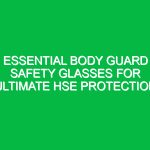Welcome to Today’s Toolbox Talk
Good morning, team! Today, we’re here to discuss something that is essential for everyone who operates or works around heavy equipment: the hidden Hazards that can arise in our daily operations. Heavy equipment, while crucial for our work, comes with risks that aren’t always visible at first glance. Our focus today will be on the Heavy Equipment (Four Other Hazards) that can impact our health and Safety. Understanding these hazards is vital to preventing accidents and ensuring that we all return home safely at the end of each day.
Understanding Heavy Equipment Hazards
Heavy equipment includes a wide range of machinery, from bulldozers and excavators to cranes and forklifts. While these machines are designed to handle tough tasks, they also pose risks. Recognizing Heavy Equipment (Four Other Hazards) is the first step toward mitigating those risks. Let’s break down these hazards and discuss how we can manage them effectively.
1. Blind Spots and Visibility Issues
One of the most significant hidden hazards associated with heavy equipment is blind spots. When operating large machinery, the operator often has limited visibility of their surroundings, which can lead to accidents involving workers, other equipment, or even pedestrians. For example, an operator may not see a coworker walking behind the equipment, leading to potentially tragic consequences.
- Best Practices: Always conduct a thorough walk-around inspection before operating any heavy equipment. Familiarize yourself with the machine’s blind spots and communicate with your team about where you’ll be working.
- Use Spotters: When operating in tight spaces or near other workers, have a designated spotter to help maintain visibility.
2. Equipment Stability and Overturning
Another hazard that can easily go unnoticed is the risk of equipment overturning. This is particularly relevant when operating cranes, excavators, or any machinery on uneven ground. Operators may not realize when they are exceeding the equipment’s stability limits.
- Best Practices: Always assess the ground conditions before operating. Use stabilizers and ensure that the equipment is on level ground whenever possible.
- Load Management: Be mindful of how much weight you are lifting or transporting. Overloading can lead to tipping, which can be catastrophic.
3. Moving Parts and Pinch Points
Heavy equipment often contains various moving parts that can pose serious risks if not properly managed. Pinch points are areas where two parts move together, and they can easily trap a worker’s hand or body part. For example, the area where a crane’s boom connects to its base can create a pinch point if proper caution isn’t exercised.
- Best Practices: Always be aware of your surroundings and where your body is in relation to moving parts. Keep hands and feet clear of pinch points during Operation.
- Training: Ensure all operators are trained to recognize and avoid pinch points. Regularly review Safety Procedures related to moving machinery.
4. Environmental Factors
Heavy equipment does not operate in a vacuum. Environmental factors such as weather conditions can change the safety dynamics significantly. Rain, snow, and even extreme heat can affect equipment performance and worker safety.
- Best Practices: Be aware of weather conditions and how they impact your work. For example, wet conditions can make surfaces slippery, increasing the risk of accidents.
- Regular Maintenance: Ensure that all equipment is maintained according to manufacturer guidelines, especially before operating in adverse conditions.
Real-Life Scenarios and Discussions
It’s important to contextualize these hazards with real-life examples. For instance, consider a scenario where an operator is driving a forklift in a warehouse. If the operator neglects to check their blind spots, they might unintentionally hit a coworker who is behind the machine. Alternatively, if a crane operator is lifting a load without considering the uneven ground, they risk tipping the equipment over, endangering themselves and those nearby.
Let’s discuss: Have any of you experienced or witnessed a near-miss related to these hazards? How did you handle it, and what can we learn from those experiences?
Compliance and Regulations
Understanding the legal framework around heavy equipment operation is crucial. The Occupational Safety and Health Administration (OSHA) has specific regulations regarding heavy equipment that we must adhere to. Non-compliance can lead to severe penalties, not to mention putting lives at risk.
- Stay Informed: Regularly review osha guidelines and any company policies regarding heavy equipment operation.
- Training: Ensure that all operators are properly trained and certified to operate the equipment they are using.
Conclusion: Your Role in Safety
In conclusion, understanding and addressing the Heavy Equipment (Four Other Hazards) is essential for maintaining a safe work Environment. By recognizing blind spots, managing equipment stability, avoiding pinch points, and considering environmental factors, we can all contribute to a culture of safety.
Thank you for your attention today. Your commitment to safety not only protects you but also your coworkers and our entire operation. Remember, safety is a shared responsibility, and it starts with each one of us. Let’s keep the conversation going—are there any questions or concerns you’d like to address today?


